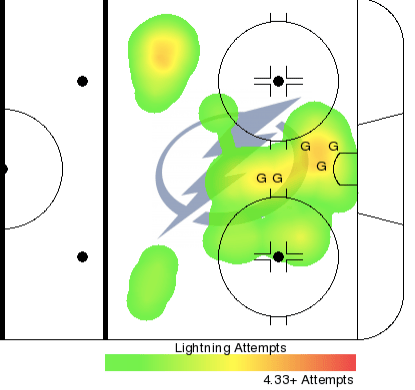In the playoffs, and especially in the Stanley Cup final, moral victories mean very little.
All that matters throughout the up-and-down grind of hockey’s grueling two-month postseason is the final score. Nothing else.
The Colorado Avalanche, though, showed just how scary they can be even on the wrong end of a blowout on Monday night. And that, if nothing else, should bring some solace to an anxious fanbase.
A 6-2 drubbing at the hands of the back-to-back Stanley Cup champions in front of 20,000 fans who have each not felt defeat since before COVID-19 entered our human lexicon sure doesn’t seem like a cause for celebration. And it wasn’t, really. The Avalanche played clearly their poorest game of the series in Game 3, allowing the Lightning to set up shop in their crease from the moment the puck dropped and weasel into the slot with comparative ease while taking advantage of new open space all over the ice that simply wasn’t available to them in Games 1 and 2.
For the first time in this series, the Lightning managed to test Darcy Kuemper. And the Avs’ netminder failed it spectacularly by allowing five goals on just 25 shots to not even make it to the second intermission.
On the surface, Tampa has every reason to walk out of Game 3 with the belief that they can topple their vaunted opponent and claim hockey’s ultimate prize.
And, in the Avalanche’s case, they do, too.
“The last thing you want to do is get frustrated,” explained Avs coach Jared Bednar shortly following the final horn.
“Especially if you’re getting opportunities and creating opportunities. Eventually, they are going to come. You don’t have any choice as a player but to stick with it. You know you’re doing all the right things. If you hold on to it, eventually you are going to break through.”
The Avalanche certainly had their fair share of chances on Monday night. In fact, they vastly outplayed the Lightning in the possession game at even-strength, pushing the pace to the tune of 65.52 percent of the available scoring chances and 51.86 percent of the expected goals despite conceding six real ones of their own.
The shot total favored Colorado as well, and by a decent margin, even before score effects kicked in late in the third, with the Avalanche firing 39 shots at Andrei Vasilevskiy compared to the 32 Tampa pelted their two goaltenders with.
As always, real, tangible goals are all that carry weight this time of year, and the Lightning scored four more than the Avalanche did to storm their way back into the series. But to call Game 3 a rout by any means would be inaccurate. Each game is a chess match. And with a few minor adjustments, the Avalanche can tilt the board back in their favor heading into Wednesday’s showdown.
Systemically, there are obviously a few things to clear up, the most pressing of which being limiting the Lightning’s zone entries and managing to avoid taking six penalties, including a needless unsportsmanlike call that negated what would have been an Avalanche power play and instead switched the game to 4-on-4.
Some good old-fashioned practice time and a few yoga-esque breathing exercises can fill in those cracks. That shouldn’t be a problem.
Where the real issue lies, however, is in the crease, with Kuemper’s ability to bounce back from arguably the worst playoff performance of his career being the most crucial adjustment the Avalanche must make to regain control. Unfortunately, it’s the one they have the least ability to control, too.
Bednar was pretty blunt in his assessment of Kuemper in the aftermath of Game 3. And why wouldn’t he be? Surrendering five goals on 21 shots is simply unacceptable for a starting goaltender in the Stanley Cup final, especially given the hefty price the organization paid to acquire Kuemper last summer to stabilize situations exactly like these.
“He didn’t have a good night,” said Bednar of his netminder in his typical matter-of-fact fashion.
“But neither did our team. So, we win as a team and lose as a team. And we weren’t as good as we needed to be.”
That’s about as close as you’ll get to an NHL coach calling out his goaltender in the heat of a pressure-packed playoff series. The general confidence in Kuemper’s abilities was largely waning even before the Final began, though, as the 32-year-old entered the series carrying a lackluster .897 save percentage and -3.7 goals-saved-above-average stat line that came courtesy of some disappointing play and repeated bouts with injury through the first three rounds.
Of course, going up against Vasilevskiy is enough to make any opposing netminder look subpar. And the Avalanche already benefited from the perennial Vezina favorite playing the worst game of his playoff career back in Denver only a few days ago. But Vasilevskiy responded in a big way in Game 3, stopping 37 shots to put the Lightning on his back, particularly in the third period, while rendering every Avalanche scoring chance fruitless all night long.
Kuemper must be able to do the same. Or, at the very least, he must find a way to return to the level of an above-average starter — the one the Avalanche banked their hopes in the crease on way back in July.
It’s not an unfair expectation to place on Kuemper’s shoulders, either. But it just so happens to be the one adjustment the coaching staff and roster players have the least control over.
Time will tell whether Kuemper can make it on his own.




